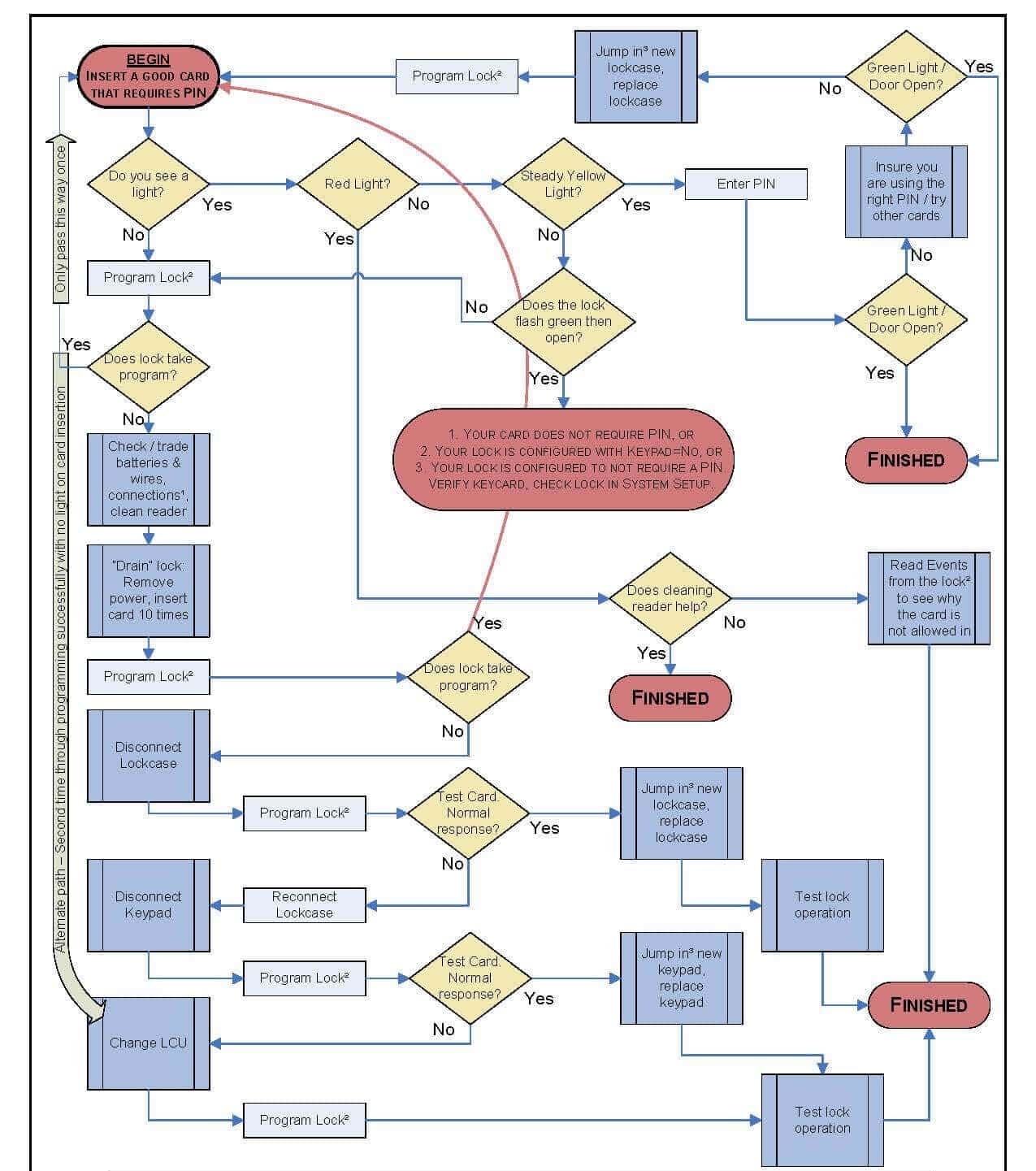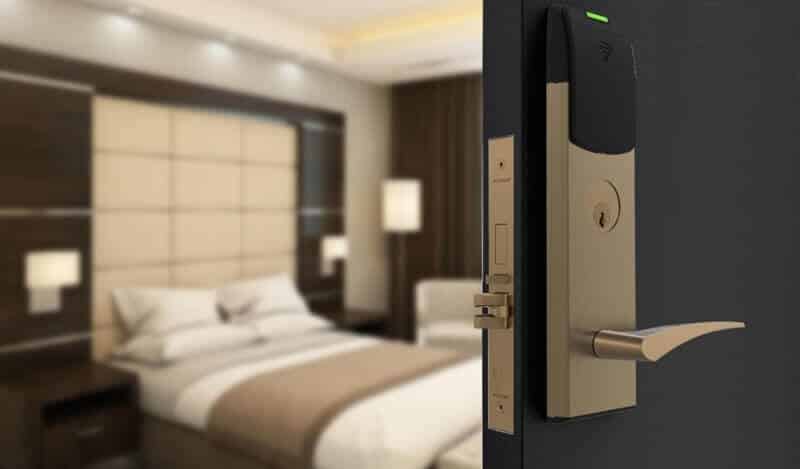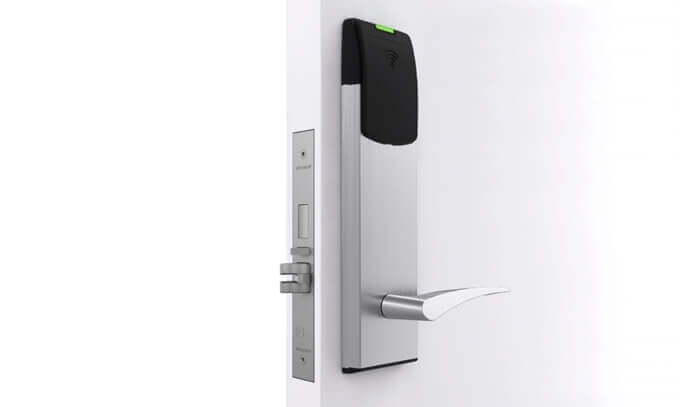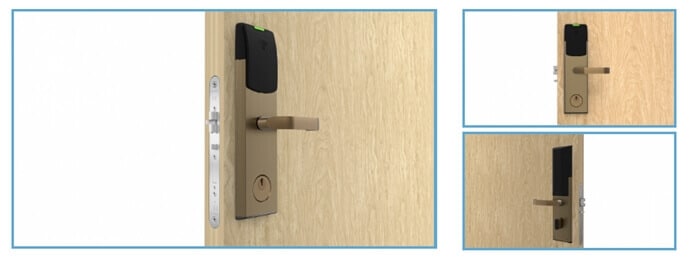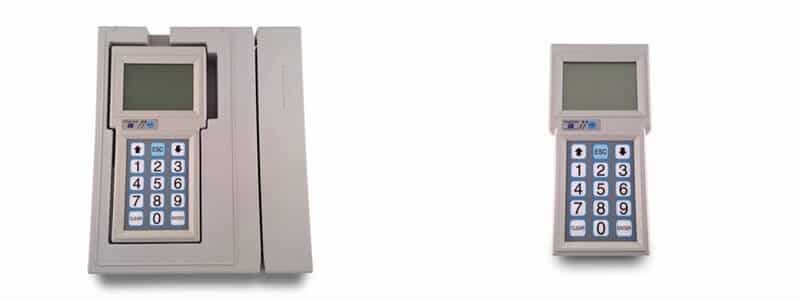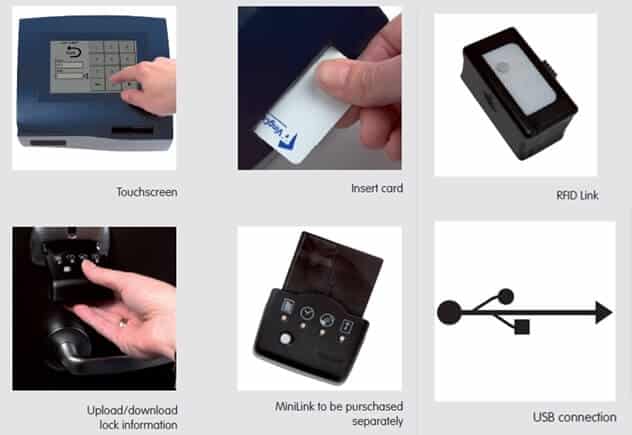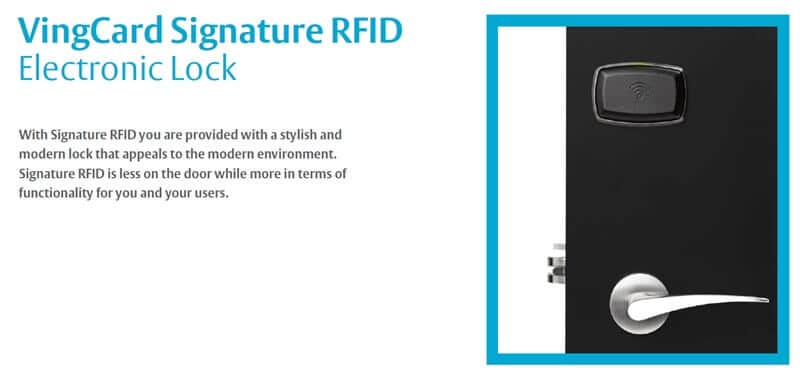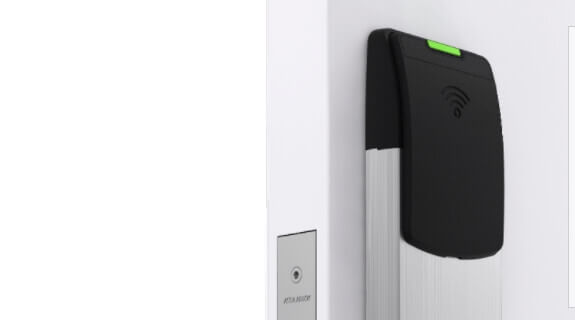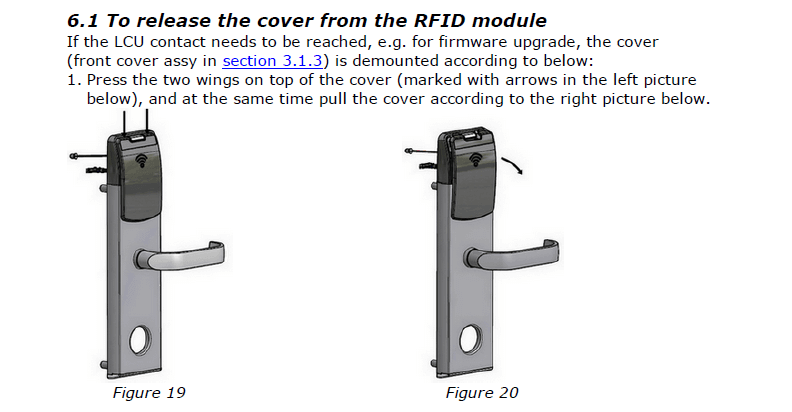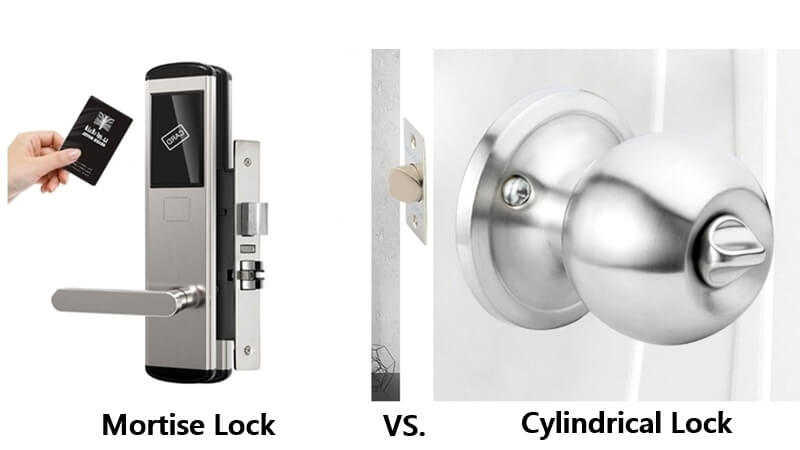Vingcard Door Lock Manual Troubleshooting: Step by Step Guide!
As one of the most professional electronic hotel door lock system suppliers in China, we have encountered many customers who have consulted us about Vingcard door lock manual troubleshooting and replacing old Vingcard door lock problems.
We’d love to help you solve Vingcard door lock problems and help you replace or upgrade old Vingcard door locks. For more information, please check our Old Hotel Door Lock Upgrading and Replacement Solutions.
So, this article will help you with necessary Vingcard door lock manual troubleshooting. Let’s get started.
Steps to VingCard lock troubleshooting
If the Vingcard lock doesn’t work, try the following steps:
- Check key card: Check that you’ve used your key correctly and try again. If you’re using a card, ensure it’s not damaged or expired.
- Check the battery: Ensure enough power in the battery compartment by checking its light (if applicable), then replace it as needed.
- Check the door. Ensure all panels are in place, including decals or stickers on glass doors (if applicable).
- Check the lock itself. If any parts of your lock seem bent or broken, contact Vingcard immediately!
- Computer: This may be the first thing to check when your card reader isn’t working. Ensure your computer is on, and try plugging in a different device. If that doesn’t do anything, reboot the system by turning it off and back on.
- Software: The software can be another source of trouble with VingCard locks. You need to ensure that you’re running the latest software version.
- Power line: Check out whether or not there is an issue with the power supply before trying other troubleshooting steps like checking cables or resetting everything back up after shutting it down because something went wrong during the hotel door lock installation process, etc
If these steps aren’t working, contact VingCard directly with more details about what happens when you use your lock and how often it occurs.
Please note that ShineACS Locks is just writing the VingCard locks troubleshooting article and providing possible handling suggestions, not offering after-sales service. If you can’t finally solve your problem with our article content, please get in touch with the Official aftermarket.
But if you want to change your hotel door lock, check our TThotel door lock system to help you manage your hotel room door more safely remotely, locking and unlocking your hotel room with your phone.
VingCard lock stopped working.
If you have a problem with your VingCard lock not working, you can check a few things to determine the cause.
- Check the Batteries: Most VingCard locks are battery-operated. Over time, batteries can deplete. Ensure the batteries are still good, and replace them if necessary. Ensure that the batteries are inserted correctly, with the right polarity.
- Clean the Card Reader: Sometimes, dirt, dust, or other particles can get inside the card slot, causing the card not to be read properly. Clean the card reader gently with a soft cloth or cotton swab. Avoid using liquid or abrasive materials.
- Check the Key Card: The problem might be the key card itself. Try using a different key card and see if it works. If you have a card encoder or programmer, you can reprogram the card to ensure it functions correctly.
- Error Messages: Some VingCard locks have a small LED light or display that can show error messages or patterns. If you notice any unusual patterns or blinking, it might indicate a specific issue. Refer to the lock’s manual or contact the manufacturer for specific error codes.
- Physical Obstruction: Ensure no physical obstruction in the latch or bolt. Sometimes, dirt or small debris can obstruct the locking mechanism.
- Check the Door and Frame Alignment: If the door and frame are misaligned, the lock might not work properly, even slightly. Ensure the door closes smoothly and the latch and strike plate are aligned correctly.
VingCard lock battery is dead.
If the VingCard lock has a dead battery, it will no longer operate as it should, potentially locking guests or staff out. Here’s what you can do if you encounter a dead battery in a VingCard lock:
- Emergency Override: Many VingCard models have a mechanical key override system. This allows you to use a traditional key to open the door in cases of emergency, such as a dead battery. Ensure that the hotel or facility management always has this mechanical key available.
- External Power Source: Some VingCard locks come equipped with an external power port, typically located at the bottom or the side of the lock. This port allows you to connect an external battery pack to power up the lock temporarily and gain access. Once connected, you can use the regular keycard to unlock the door.
- Battery Replacement:
- After gaining access to the room, you must replace the dead batteries in the lock.
- Most VingCard locks use AA batteries, but you should check the specific model for the type and number of batteries needed.
- Always replace all batteries at once and ensure they are all of the same type and brand. Mixing old and new batteries or different brands can lead to suboptimal performance.
- Ensure the batteries are inserted correctly, respecting the polarity (+/-) indicated inside the battery compartment.
- Routine Maintenance:
- Consider setting a routine maintenance schedule to periodically check and replace batteries in VingCard locks to prevent future occurrences.
- The lifespan of the batteries can vary based on usage, but as a general guideline, consider checking them annually or bi-annually. In high-traffic areas or places where the door is frequently accessed, you might need to replace them more often.
VingCard lock key card is not working.
When a VingCard lock’s hotel keycard isn’t working, there can be multiple causes. Here’s a step-by-step guide to help you troubleshoot:
- Keycard Issues:
- Wear and Tear: Physical damage or wear to the keycard can affect its functionality. Examine the card for any visible signs of damage or excessive wear.
- Demagnetization: If the keycard comes into contact with magnets or certain electronic devices, it can become demagnetized and may not work. Avoid placing keycards near magnets, phones, or other electronic devices.
- Expiration: Some keycards are programmed to work only for a specific duration. For example, in hotels, the card might be set to expire at the end of a guest’s stay.
- Lock Issues:
- Battery: One of the most common reasons electronic locks fail is battery depletion. It may be time to change the batteries if the lock doesn’t light up or react when the keycard is inserted.
- Dirt or Debris: The card reader can sometimes become obstructed by dirt or debris. Gently clean the slot with a soft cloth or air duster.
- Mechanical Failure: The lock might have a mechanical issue, such as a jammed latch or misalignment with the door frame.
- Programming Issues:
- Incorrect Programming: The card may not be properly programmed for that lock. Try using another card that you’re sure is programmed correctly.
- Overwritten Data: If a card is reprogrammed multiple times or at different doors, it might overwrite previous data, causing the card not to work with some locks.
- Steps to Take:
- Try Another Card: If you have another keycard, try it. This will help you determine whether the keycard or lock is the issue.
- Reprogram the Card: If you can access a card encoder or programmer, try reprogramming the keycard.
- Reset the Lock: Some locks may have a reset function to help resolve minor glitches or errors.
- Battery Replacement: If you suspect the batteries are low or dead, replace them.
VingCard Lock Beeping and Blinking
When a VingCard lock is beeping and blinking, it typically provides feedback regarding the lock’s status or indicates a specific condition or error. Here are common reasons why a VingCard lock might blink/blink and their potential meanings:
- Successful Unlock: Some models might emit a green light or blink once to confirm that the door has been unlocked.
- Battery Warning: A common reason for a VingCard lock is to beep and flash a specific color to alert you that the batteries are running low and must be replaced soon.
- Invalid Keycard: If the lock beeps and A red blinking light rapidly when a keycard is inserted, it might indicate that the card is invalid or not programmed for that specific lock. It might need reprogramming.
- Door Opened or Unlocked: Some models beep and blink green once to confirm the door has been unlocked successfully.
- Door Not Properly Latched: Some VingCard locks might beep and blink a pattern if the door isn’t fully closed or properly latched after being opened. This serves as a reminder to secure the door.
- System Error: Some beeps or patterns might indicate a malfunction or system error. If this is the case, the issue might not be immediately fixable and require professional assistance or a system reset.
- Tamper Alert: Some advanced locks have a tamper detection feature. If someone tries to tamper with or force the lock, it might emit loud beeps as an alert.
- Maintenance Mode or Programming: If someone is programming the lock or setting it to maintenance mode, the lock might beep to confirm commands or indicate its status.
Note: It’s essential always to have a backup way to access the room or area, especially in commercial settings like hotels, to ensure guests or staff aren’t locked out.
VingCard 2100 handheld troubleshooting
The VingCard 2100 system is a popular hotel door lock system. The handheld device for the system is used to program and manage locks. Here are common issues with the VingCard 2100 handheld device and troubleshooting steps:
- Device Not Turning On:
- Check the battery and ensure it’s fully charged.
- Check for any visible damage or signs of wear on the device.
- Ensure the device’s connectors or charging ports are clean and debris-free.
- Device Not Communicating with Locks:
- Ensure the device is in the correct mode or setting for communicating with locks.
- Confirm that there’s no physical obstruction between the device and the lock.
- Check if there’s any interference from other electronic devices nearby.
- Cannot Program Locks:
- Make sure the handheld device is properly synced with the main system.
- Ensure you’re following the correct sequence or steps for programming.
- Check if the lock itself might be the issue by trying to program a different lock.
- Data Errors or Unexpected Behavior:
- Reset the handheld device to its default settings.
- If available, update the firmware or software of the handheld device.
- Ensure that there’s no corruption in the data. If necessary, re-enter or re-upload any required data.
- Screen or Interface Issues:
- If the screen is unresponsive, consider resetting the device.
- Check for physical damage or issues with the screen.
- Device Not Charging:
- Check the charger and charging cable for signs of wear or damage.
- Ensure the charging port on the device is clean and free from debris.
- Try a different charger if available.
- Memory or Storage Issues:
- If the device indicates it’s out of storage or memory, you might need to delete old or unnecessary data.
- Ensure that the device’s storage isn’t corrupted. If necessary, format the storage (note: this will delete all data on the device).
- Lost or Forgotten Password:
- If you’ve lost or forgotten the password to the device, you might need to contact VingCard’s support for assistance.
- Some devices might have a master reset or master password feature, but use it cautiously as it might reset other settings or data.
If the above troubleshooting steps don’t resolve the issue, it might be time to contact VingCard’s customer support or a professional familiar with the VingCard 2100 system. They can provide specific guidance, offer repairs, or recommend necessary replacements.
Vingcard 2800 Front Desk System troubleshooting
The VingCard 2800 is an electronic locking system commonly used in hotels and other hospitality environments. The front desk system is crucial for encoding keycards and managing guest access. If you’re experiencing issues with your VingCard 2800 Front Desk System, here’s a general troubleshooting guide to help:
- System Not Turning On:
- Check if the system is properly connected to a power source.
- Ensure that the power outlet is functional. Try plugging another device into the same outlet to verify.
- Cannot Encode Keycards:
- Make sure you’re using compatible keycards with the system.
- Ensure the encoder is clean. Over time, dirt and debris can accumulate inside the encoder, affecting its ability to encode cards.
- Check if the encoder is properly connected to the system.
- Keycards Not Working on Doors:
- Double-check the programming. Ensure the dates, room numbers, and access levels are correctly set.
- Ensure the locks on the doors have sufficient battery power.
- Check if the keycard itself might be damaged or demagnetized. Avoid placing keycards near magnetic sources or electronic devices.
- Try encoding another card to test whether it’s a specific or system-wide issue.
- System Errors or Freezes:
- Restart the system. Turning the system off and back on can sometimes resolve many electronic glitches.
- Ensure there’s no interference or conflicting software running on the system.
- Data or Communication Errors:
- If the system is integrated with a property management system (PMS), ensure the connection is stable.
- Check all cables and connections. Loose or damaged cables can result in data errors.
- If using an external database or server, ensure it’s running correctly and accessible.
- Screen Display Issues:
- Adjust the screen resolution or display settings.
- Check for any physical damage to the screen.
- Lost or Forgotten Password:
- If the system is password-protected and you’ve forgotten the password, you might need to contact VingCard’s support for assistance.
- There might be a master reset option, but use this cautiously as it might delete or reset other system settings.
If the issues persist after trying the above troubleshooting steps, contacting VingCard’s customer support or a professional familiar with the VingCard 2800 system is recommended. They can offer more specific guidance and repair services, or recommend necessary system upgrades or replacements.
Vingcard lock RFID key card encoder troubleshooting
RFID key card encoders, including those from VingCard, are essential components in RFID hotel electronic locking systems, particularly in the hospitality sector. If you’re facing problems with your VingCard RFID key card encoder, here’s a troubleshooting guide:
- Encoder Not Recognized or Connecting:
- Check the encoder’s connection to the computer or system. Ensure all cables are firmly connected.
- Try connecting the encoder to another USB port or computer to see if the problem persists.
- Ensure the correct drivers are installed for the encoder.
- Cannot Encode Keycaryou followed using compatible RFID keycards for your gCard system.
- Verify the encoder’s reading/writing heads are clean. Dust or debris can hinder card encoding. Use a soft cloth or an RFID card cleaning kit to clean gently.
- Ensure you follow the correct encoding process or sequence outlined in the user manual or hotel lock system software guide.
- Encoded Cards Not Working:
- Confirm that the encoding process was completed without errors.
- When encoding, check the validity period, room number, and access levels to ensure they are set correctly.
- Test with multiple RFID cards to determine whether it’s a card-specific or system-wide problem.
- Ensure door locks have sufficient battery power and are functioning properly.
- Software or Firmware Issues:
- Restart the encoding software or the computer system.
- Ensure the encoder’s firmware is up-to-date. Manufacturers occasionally release updates to fix bugs or enhance functionality.
- Verify the compatibility of the encoder’s software with your computer’s operating system.
- Error Messages or Alerts:
- Refer to the VingCard user manual or software guide for any specific error codes or messages.
- Common errors might relate to data communication, card compatibility, or system settings.
Always consult the user manual or product documentation for your VingCard encoder model. It will often contain valuable information, troubleshooting steps, and contact details for support.
Still can’t solve the problem? Try replacing your old hotel lock system Check Our RFID Hotel Lock System Free Software · Permanent valid registration code · 2 years warranty |
VingCard light codes
The following light codes may appear on the front panel of your VingCard lock:
- Green – The lock is ready to accept a keycard.
- Yellow – The lock is in programming mode.
- Red – The lock is in Audit mode. It should not be used as a door handle until it returns to green (ready) status or resets itself via the reset button found on most models, which can also be used when flashing red lights are displayed. No other information is known about what caused them.
- Red Blink – The door has failed to open; check power and battery levels for signs that either may have drained too low for regular operation or verify that no obstructions prevent access through this door (for example, if any damage has occurred).
- Red Flash – Someone attempted entry into your building without permission.
- Flashing green and then red means that the batteries have run out. You will need to replace them with new ones.
- It flashes green three times and then goes off; there is a problem with the door reader or its connection. Check that all wire connections are secure and for corrosion on any metal parts of the door reader.
- Flashing red every few seconds or minutes could be due to poor electrical wiring in your home or apartment building.
- Four short YELLOW flashes followed by one quick GREEN flash: battery alarm, access granted (battery alarm followed by access chirp)
- Four short YELLOW flashes: battery alarm, access denied
- Long GREEN flash: the first time a function card is presented at a lock, the function is activated (stand open, blocking, privacy)
- Two short GREEN flashes: the second time a function card is offered at a lock, the operation is deactivated(stand empty, blocking, privacy)
- Three quick RED flashes: read-out card is full- sys-ID exchange failed- power open failed
- Three concise YELLOW flashes: the lock is deadbolted
- Three very short YELLOW flashes followed by three short YELLOW flashes: alert the staff that the lock is blocked for one or more user groups
- YELLOW continuous light: lock communicates with a cancel card, initiation card, calendar card, read-out card, or read-out card advanced; alerts the user not to extract the card until after the finishing chirp and short green flash, or the operation will not be successful.
- YELLOW continuous light: if the unit gives a constant yellow light without a card presented at the lock, the unit must be reprogrammed
Note: There are two possible sounds for an emergency opening. Whether you get a regular or an emergency to stand open depends on whether you have an open one. Emergency stands available means that the door has to be locked by an emergency card once it has been opened by one. - Short GREEN flash Sound: regular emergency opening
- One short and one long GREEN flash: emergency stand open, set
- Short GREEN flash Sound: emergency stand open, clear
Vingcard manual
If you’re looking for a VingCard door lock manual, we can help. Please check the following Vincard user manual for your reference:
- VingCard Classic RFID User Manual
- Vingcard Allure User Manual
- Vingcard Essence User Manual
- Vingcard Vision User Manual( version 5.10)
- Vingcard VISION LINE User Manual( version 1.12.0)
- Vingcard 2800 Front Desk System User Manual
VingCard lock reset
To reset the lock, follow these steps:
- Turn the knob to the unlock position and hold it there for about 20 seconds. The light will stop flashing and begin to glow steadily. You’re now in programming mode!
- Press and release your old master code on your VingCard Classic or Encore door lock just like you would if opening your door with a key (if you’re unsure what the master code is, it should be listed in your instructions).
- Once this step is complete, turn off the power to the card reader on the first try by pressing quickly onto one of its buttons for 10-20 seconds until it turns itself off automatically;
- then pull out its battery (if applicable) for 10-15 minutes before reinserting it back into its compartment after elapsed.
Conclusion
The Vingcard door lock troubleshooting can be tricky, but do not worry; our step-by-step guide will solve the problem. We hope this article has helped you troubleshoot your Vingcard door locks and keep them working correctly!
Getting in touch with a trusted locksmith company isn’t the worst idea if all else fails.

